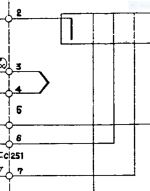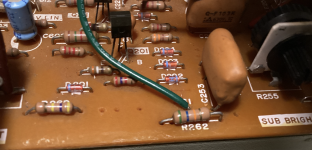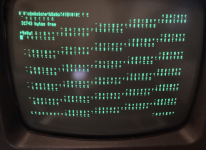DistantStar001
Experienced Member
- Joined
- May 8, 2019
- Messages
- 178
Thanks for this! I've checked the solder joints and didn't see anything. But I'll go over it again to be sure.I've got the same analog board in my pet I believe... Issues I've had with it where dirty brightness pot and cracked solder joints on the main connector (upper right in your picture)
This should be the correct schematic http://www.zimmers.net/anonftp/pub/cbm/schematics/computers/pet/8032/321448.gif
Even though the first schematic wasn't the right one for my board, it does appear that the wire color codes given are the same.
Remeasuring with my multimeter, this is what I got:
Green G1: Brightness turned all the way to the left, -141.7v; all the way to the right, -81.7v (sub brightness makes no difference)
Red G2: -329v
Blue G4: Focus (wasn't expecting that) turned all the way to the left, 48.6v; all the way to the right, 275v (sub brightness makes no difference)



